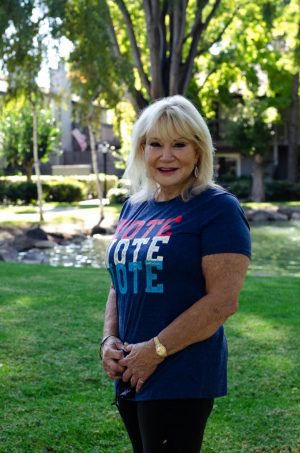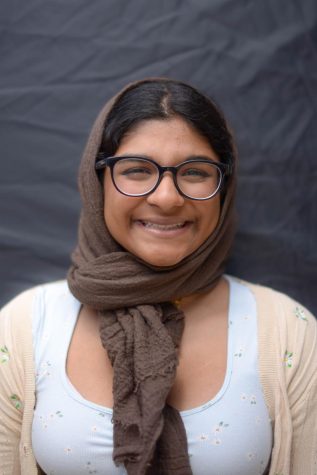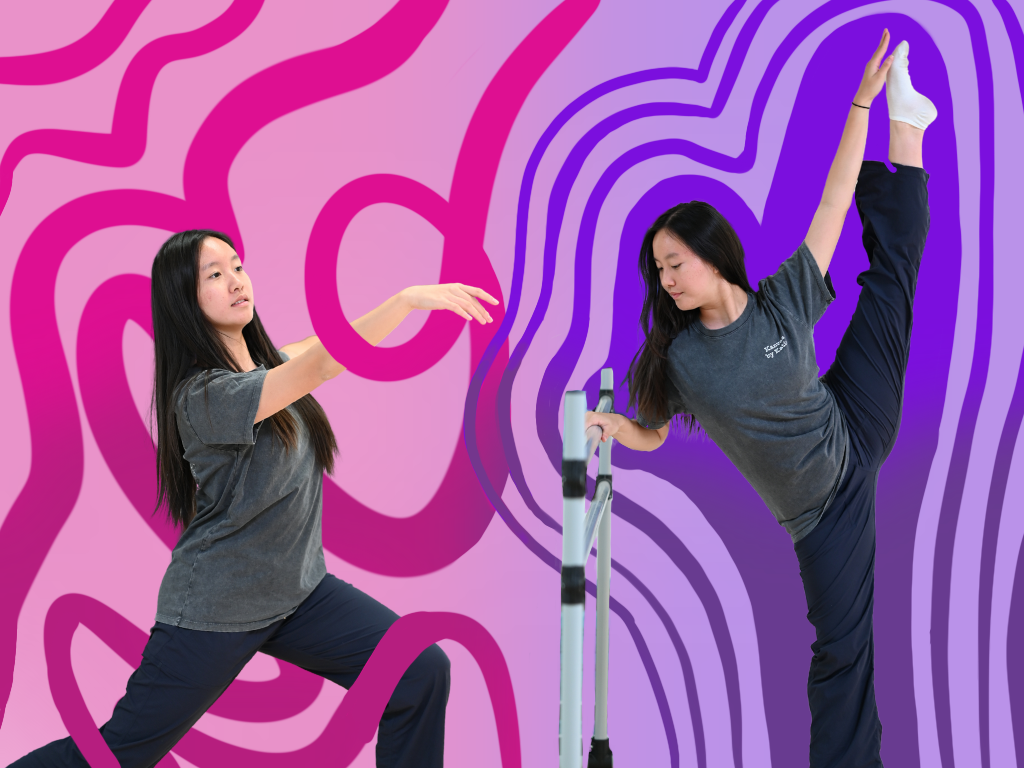So you wanna be a music and arts critic?
New York Times journalist pursues music criticism through the lens of Latinx identity and culture
Provided by Isabelia Herrera
New York-stationed journalist Isabelia Herrera smiles, tucking her hair behind her ears. Herrera writes about music and Latinx culture as an Arts Critic Fellow at The New York Times.
November 27, 2021
2021-22 New York Times Arts Critic Fellow and 2017 Forbes 30 Under 30 Media honoree Isabelia Herrera never thought she would be a critic. She always loved music, especially music that reminded her of home, and she was a bookworm from a young age, devouring poems and stories by various authors. But her career as a critic has blossomed into pursuing that passion through journalism — her byline neatly pressed below dozens of articles in black serif font.
Herrera, who is the daughter of Dominican parents, has written for The New York Times since 2019 and grew up in Oak Park, Illinois, surrounded by numerous others from Latin America. She has stayed close to her roots and the fervor that she had towards books and other literary works as a child, consuming pieces that explore revolutionary and political ideas using the cadence of language and sound.
“Reading a lot of work by Black feminists has been very important to me,” Herrera said. “Recently, I just last year finished my master’s degree in Latin American Studies, and I read a work by this Martiniquen poet named Édouard Glissant, and that has just completely changed my approach to writing and thinking so much. All of that has been really influential for me and my style of writing.”
As an avid listener of music ever since she was a child, Herrera’s tastes in songs have shifted and mingled into a diverse set of perspectives: she enjoys listening to the more traditional songs of her childhood in addition to the great variety of songs that she was exposed to while living in different areas over the course of her career.
“I always held a soft spot in terms of [music touching upon my] nostalgia for home, but at the same time I started off listening to a lot of punk music — that was like the first kind of genre I really dug into — and then as I got older I was exposed to different genres and got into a lot more hip hop, electronic music, that changed my taste,” Herrera said.
Living in the suburbs of Chicago, Herrera never experienced being part of a larger community of Dominicans. Though surrounded by different types of Latin American culture that cultivated her fondness for bachata and merengue, two Dominican styles of music and dance, Herrera still felt a lack of connection to her Dominican heritage due to the lesser population of those of specifically Dominican background in the community.
In 2010, Herrera moved to New York City to attend university at Barnard College, staying in the city after graduating in 2014. Soon, she started working in media and freelancing at different publications, writing about music and the arts. New York’s diversity, specifically in introducing her to other Dominicans, contrasted with Chicago, allowing Herrera to feel more connected to her identity and with others.
“I felt a lot more pride. I just felt more culturally affirmed all the time and that’s something that I maybe didn’t necessarily feel in Chicago,” Herrera said. “When I moved to New York, I had this newfound sense of community just because it was around me so much … [it] just felt so much more like a community, and like home in a certain way.”
Herrera’s first full-time job in media was at Remezcla, a publication centered around Latino culture in New York. There, she worked as a copy editor for six months, during which her publication saw her growing love for music, and soon, Remezcla gave Herrera the position of Music Editor. While at Remezcla, Herrera wrote more and more about art and music with a special connection to Latinx culture.
After staying at her editor position for four years, Herrera decided to pursue a master’s degree in Latin American and Caribbean Studies at New York University, continuing her practice of freelancing at larger magazines and newspapers like GQ, Pitchfork and Playboy, specializing in music with a focus on current culture and diversity in identity.
When she caught sight of an opening for a year-long Arts Critic Fellowship program at The New York Times for the 2021-22 year in the last month of her master’s program, Herrera applied, with her freelancing work acting as a springboard for her eventual stories for the Times. Through this fellowship program, she aims to hone her skills in criticism, especially as opportunities for the field in the journalistic world may be declining.
“I knew that a place like The New York Times would have a space for cultural criticism,” Herrera said. “Because of the way the industry is structured, there are less full-time positions or publications for critics, so I really wanted to take this fellowship so I could really sharpen those skills and hone that part of my writing practice.”
Claire Austin-Kulat, who has known Herrera since they were eight years old, and even worked with her on a world news newspaper in fourth grade, has followed her journey through college and beyond, and believes that Herrera truly belongs as a journalist.
“She’s always been a wonderful writer, and always miles ahead in terms of the way she thinks and how she expresses that,” Austin-Kulat said. “It’s been gratifying to see other people appreciate that, like ‘Oh, yeah! This person I’ve loved for 20 years, other people love her too.’”
At The New York Times, Herrera has received positive feedback from her coworkers and close friends through her progress with covering Latinx culture and topics. Currently, Herrera writes almost exclusively about Latinx culture, helping to break the barrier for these communities.
Herrera’s daily routine at The New York Times starts with a culture department meeting each morning, discussing trending topics and works about to be published. Overall, the rest of her schedules vary, with her conducting interviews, outlining pieces or organizing her ideas and story-telling and sometimes just listening to music.
Ever since she engaged with music and books and spaces of language around her in childhood, Isabelia has felt that artistic mediums can be ways an author or artist can explore a topic in more subtle manners, like bringing up polarizing concepts like politics through music.
“The beauty of music and art is that it allows you to say certain things that words can’t,” Herrera said. “My work, more broadly, these days, is talking about how music and art are small rebellions embedded in experiences of listening or experiences and encounters. The art that [does this] definitely intrigues me the most and it gives me the most affirmation for what’s creatively possible.”
Through her journey of art, music, creation and criticism, Herrera has learned the importance of connecting with and writing about her true thoughts rather than trying to appeal to the masses, gaining confidence in her own focused analysis and writing. As a Dominican woman, Herrera feels that so much of her life and her experiences have been rooted in her identity through being drawn to and analyzing music and culture that relates to that part of herself, relates who she is.
“Part of my journey has been allowing it to be okay to just say, ‘This is my perspective, this is how I encountered this work, this is how I experienced it, this is how I received it,’” Herrera said. “It really has been this shift towards letting myself let go of some of the anxiety and pressure about having to say everything.”


















![“[Building nerf blasters] became this outlet of creativity for me that hasn't been matched by anything else. The process [of] making a build complete to your desire is such a painstakingly difficult process, but I've had to learn from [the skills needed from] soldering to proper painting. There's so many different options for everything, if you think about it, it exists. The best part is [that] if it doesn't exist, you can build it yourself," Ishaan Parate said.](https://harkeraquila.com/wp-content/uploads/2022/08/DSC_8149-900x604.jpg)




![“When I came into high school, I was ready to be a follower. But DECA was a game changer for me. It helped me overcome my fear of public speaking, and it's played such a major role in who I've become today. To be able to successfully lead a chapter of 150 students, an officer team and be one of the upperclassmen I once really admired is something I'm [really] proud of,” Anvitha Tummala ('21) said.](https://harkeraquila.com/wp-content/uploads/2021/07/Screen-Shot-2021-07-25-at-9.50.05-AM-900x594.png)







![“I think getting up in the morning and having a sense of purpose [is exciting]. I think without a certain amount of drive, life is kind of obsolete and mundane, and I think having that every single day is what makes each day unique and kind of makes life exciting,” Neymika Jain (12) said.](https://harkeraquila.com/wp-content/uploads/2017/06/Screen-Shot-2017-06-03-at-4.54.16-PM.png)








![“My slogan is ‘slow feet, don’t eat, and I’m hungry.’ You need to run fast to get where you are–you aren't going to get those championships if you aren't fast,” Angel Cervantes (12) said. “I want to do well in school on my tests and in track and win championships for my team. I live by that, [and] I can do that anywhere: in the classroom or on the field.”](https://harkeraquila.com/wp-content/uploads/2018/06/DSC5146-900x601.jpg)
![“[Volleyball has] taught me how to fall correctly, and another thing it taught is that you don’t have to be the best at something to be good at it. If you just hit the ball in a smart way, then it still scores points and you’re good at it. You could be a background player and still make a much bigger impact on the team than you would think,” Anya Gert (’20) said.](https://harkeraquila.com/wp-content/uploads/2020/06/AnnaGert_JinTuan_HoHPhotoEdited-600x900.jpeg)

![“I'm not nearly there yet, but [my confidence has] definitely been getting better since I was pretty shy and timid coming into Harker my freshman year. I know that there's a lot of people that are really confident in what they do, and I really admire them. Everyone's so driven and that has really pushed me to kind of try to find my own place in high school and be more confident,” Alyssa Huang (’20) said.](https://harkeraquila.com/wp-content/uploads/2020/06/AlyssaHuang_EmilyChen_HoHPhoto-900x749.jpeg)
















